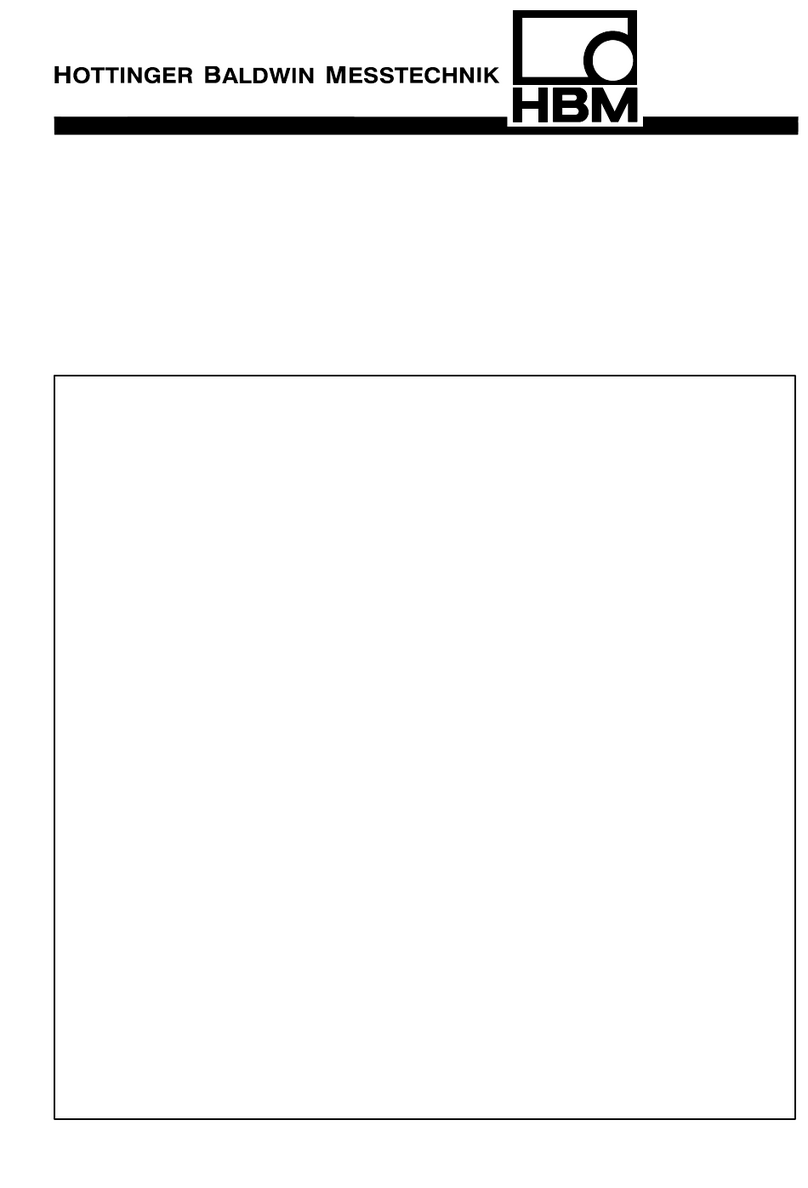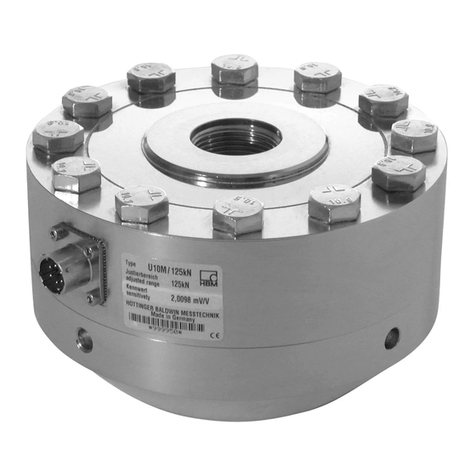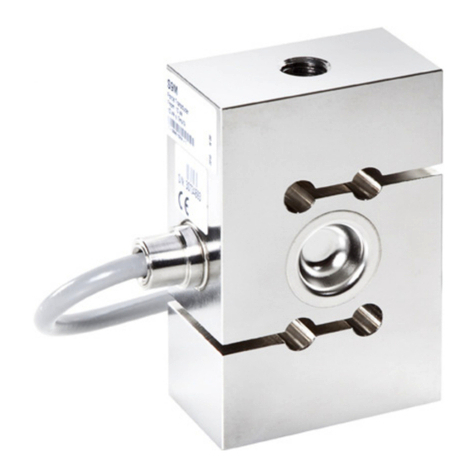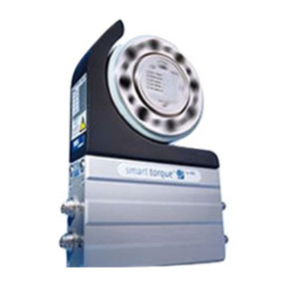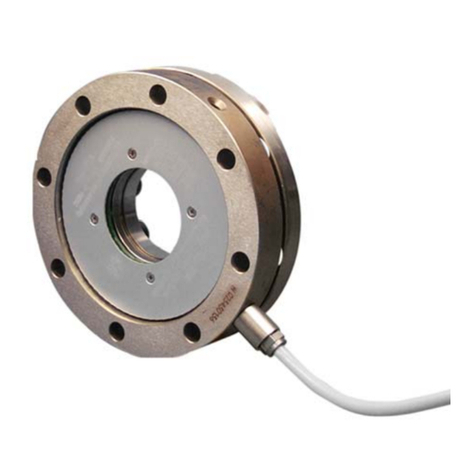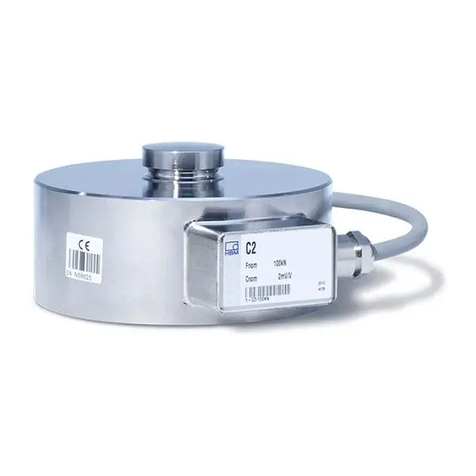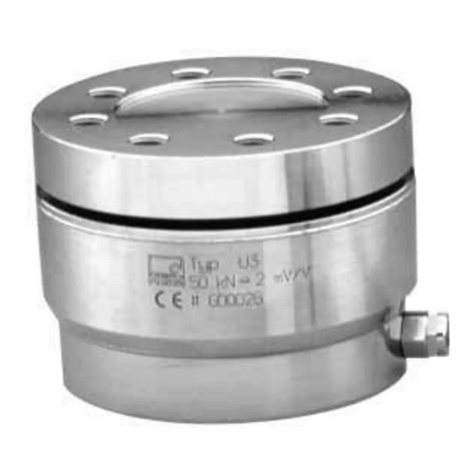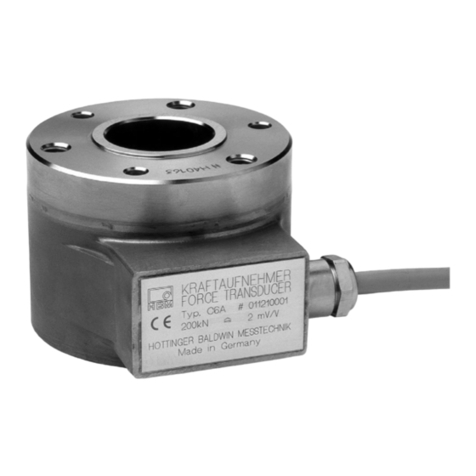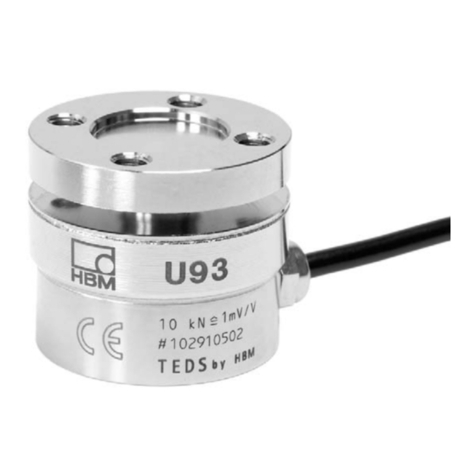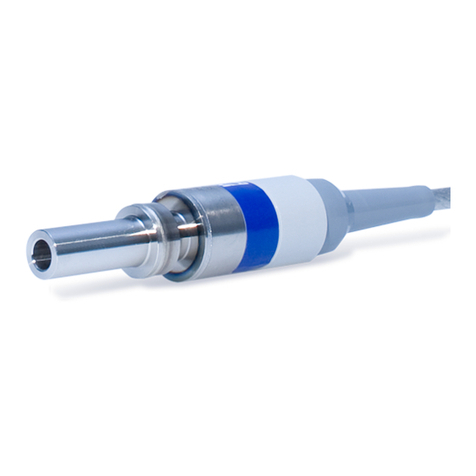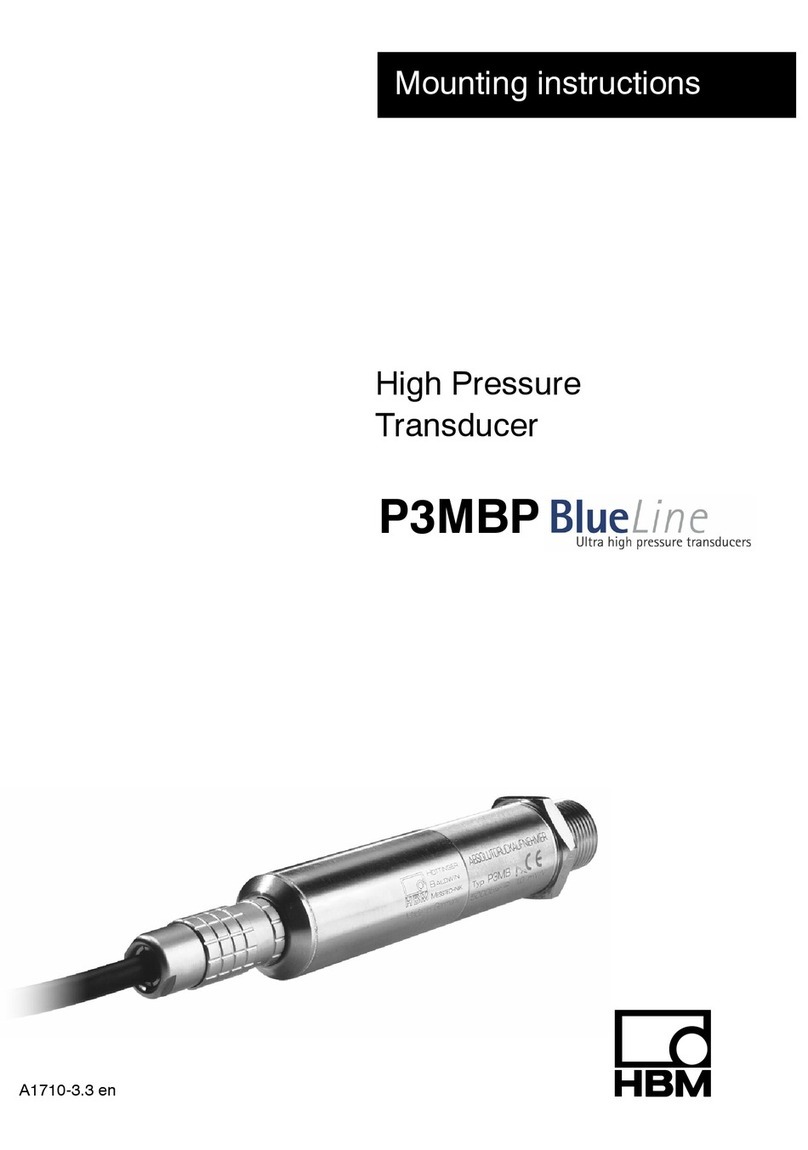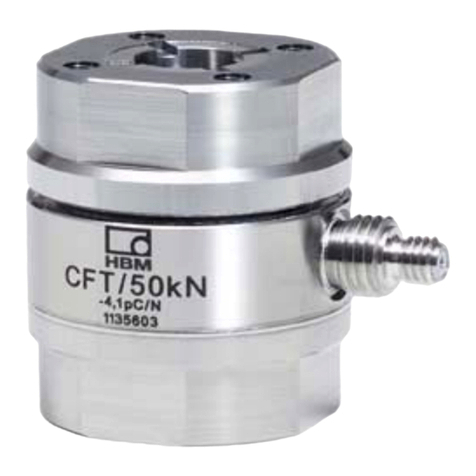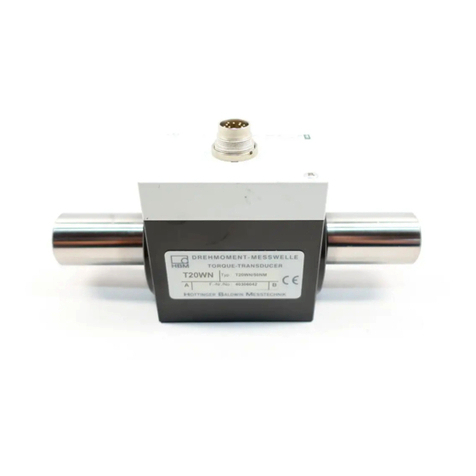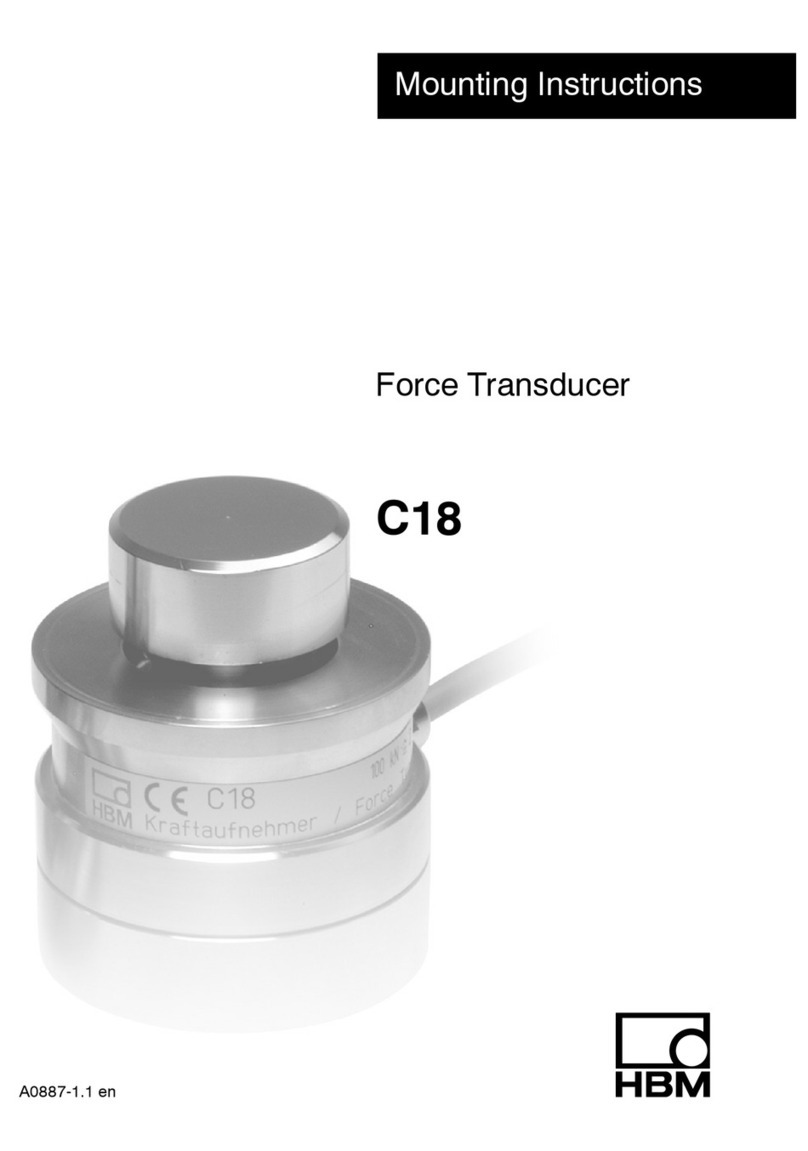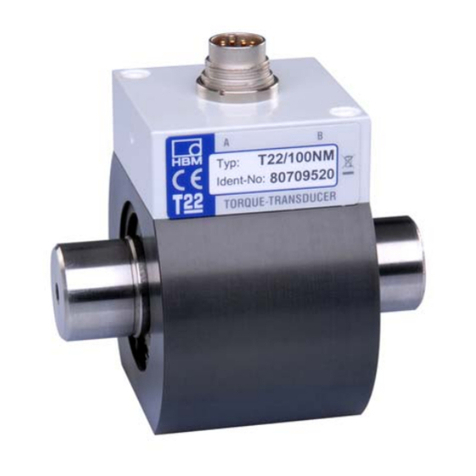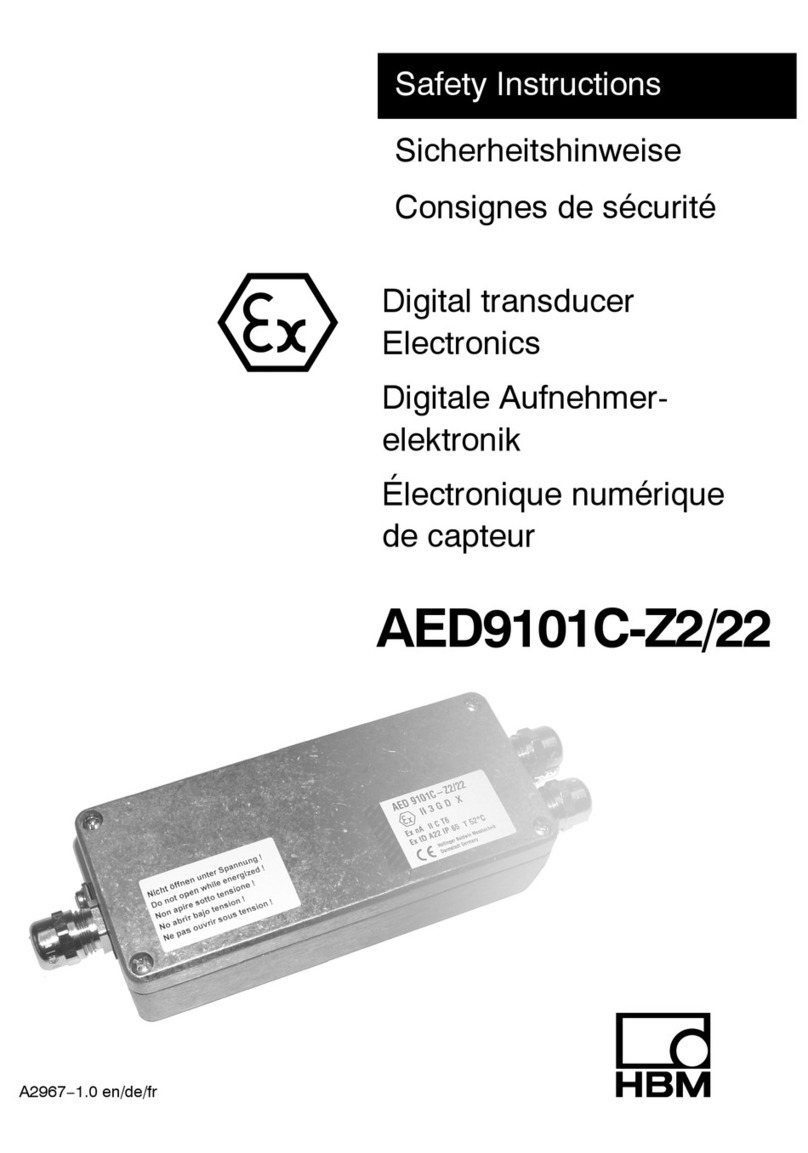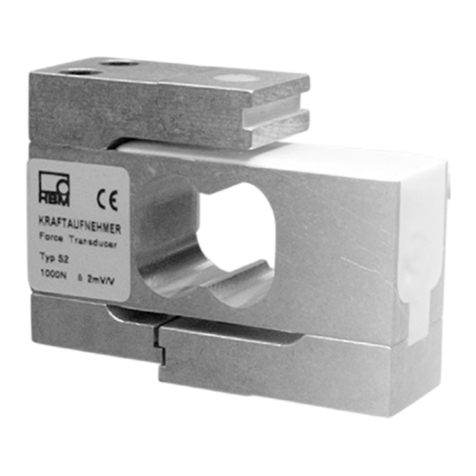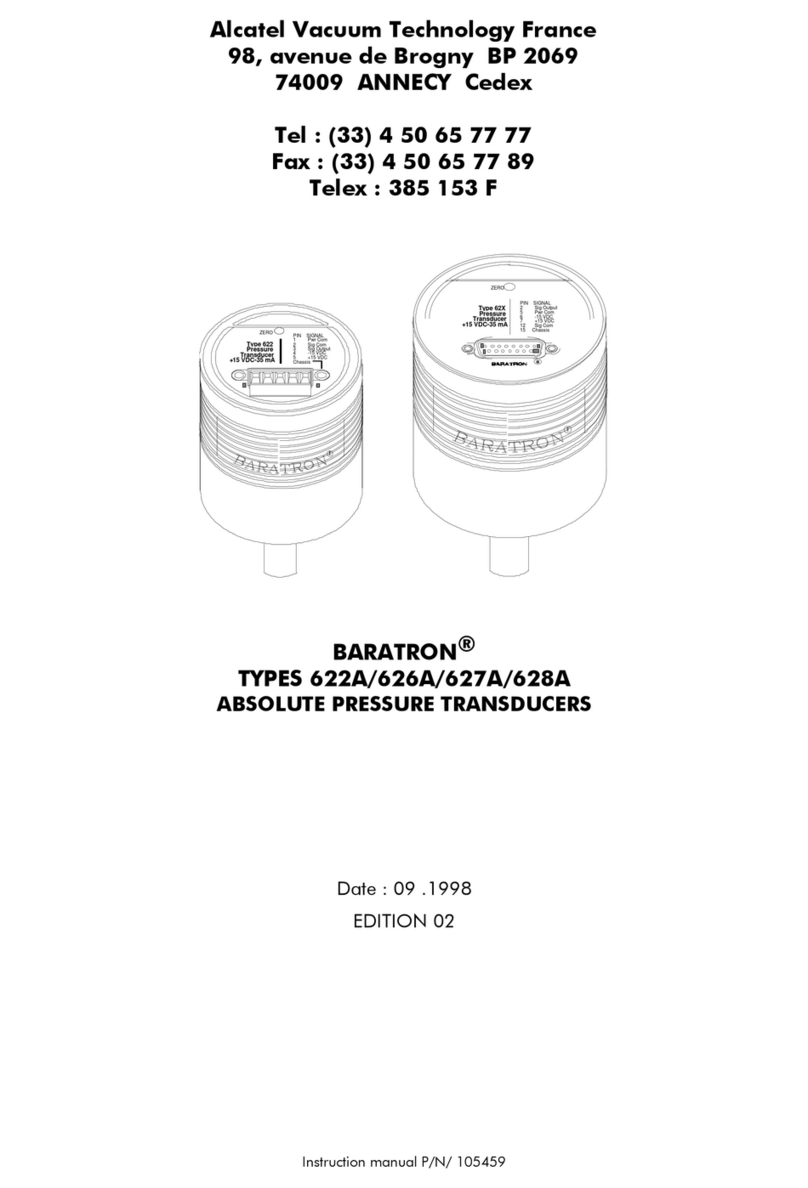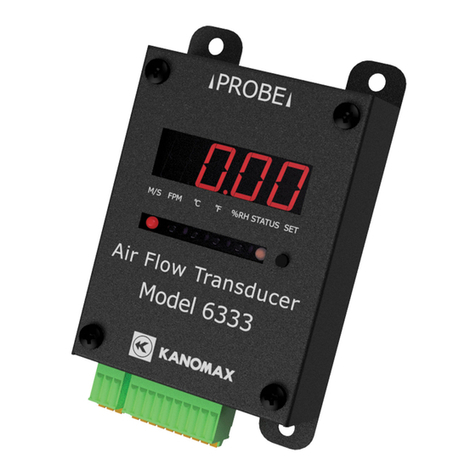
Safety instructions
4A05449_01_Y00_02 HBM: public C11
Accident prevention
The prevailing accident prevention regulations must be taken into account,
even though the nominal (rated) force values in the destructive range are well
in excess of the full scale value.
Additional safety precautions
Force transducers cannot (as passive transducers) implement any (safety-
relevant) cutoffs. This requires additional components and constructive
measures, for which the installer and operator of the plant is responsible.
In cases where a breakage or malfunction of the force transducer would cause
injury to persons or damage to equipment, the user must take appropriate
additional safety precautions that meet at least the applicable safety and
accident prevention regulations (e.g. automatic emergency shutdown, overload
protection, catch straps or chains, or other fall protection).
The electronic processor that processes the measurement signal should be
designed so that failure of the measurement signal cannot lead to secondary
failures.
General dangers of failing to follow the safety instructions
Force transducers are state-of-the-art and failsafe. Transducers can give rise
to residual dangers if they are mounted, installed, used and operated
inappropriately or by untrained personnel. Every person involved with setting
up, starting up, operating or repairing a force transducer must have read and
understood the mounting instructions and in particular the technical safety
instructions. The force transducers can be damaged or destroyed by non-
designated use of the force transducer or by non-compliance with the mounting
and operating manual, these safety instructions or other applicable safety
regulations (safety and accident prevention regulations of the Employers'
Liability Insurance Association) when using the force transducers. A force
transducer can break, particularly if it is overloaded. The breakage of a force
transducer can cause damage to property or injury to persons in the vicinity of
the force transducer.
If force transducers are not used as intended, or if the safety instructions or
specifications in the mounting and operating instructions are ignored, it is also
possible that a force transducer may fail or malfunction, with the result that








